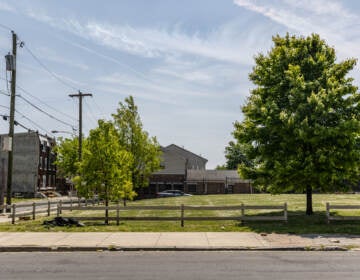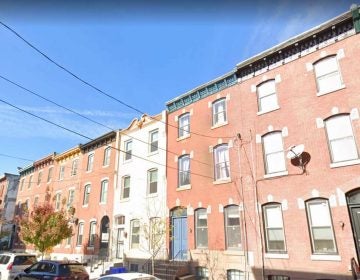Historical Commission director seeks revision of hardship regulations

Jon Farnham has asked the Historical Commission to vote on whether to amend its Rules and Regulations to remove a line requiring historic property owners seeking financial hardship to “attempt the sale of the property.” The change was proposed last week by Commission Director Farnham, who feels that the Board of L&I Review, which hears appeals of Historical Commission decisions, has not properly deferred to the agency’s own interpretation of that portion of its rules.
The vote was originally scheduled for this Friday, but has been delayed until the April meeting because Commission chair Sam Sherman won’t be able to attend.
The preservation ordinance says that, in order for hardship to be proven—and demolition of a historic property to be allowed—“the owner must demonstrate that the sale of the property is impracticable, that commercial rental cannot provide a reasonable rate of return, and that other potential uses of the property are foreclosed.” That test, Farnham says, comes directly from legal precedent in two court cases: Maher v. City of New Orleans and First Presbyterian Church of York v. City Council of City of York.
(Review Farnham’s proposed changes to the Rules here. Read a primer on hardship here.)
The Commission’s Rules and Regulations, essentially its bylaws for implementing the city’s Historic Preservation Ordinance, contain the same test as the ordinance. But they also contain an additional sentence: “The applicant has an affirmative obligation in good faith to attempt the sale of the property, to seek tenants for it, and to explore potential reuses for it.”
That’s the sentence that Farnham wants to remove. He says the phrase has been part of the Commission’s regulations since they were first adopted, in 1990, but that the Commission has interpreted it broadly. The Commission has granted hardship to buildings whose owners have marketed them informally for sale, where real estate consultants have performed market studies showing that a sale is impracticable, and, in the recent case of 400 S. 40th Street, where the owners have offered long-term ground leases. The rules, Farnham says, were never intended to require a hardship applicant to attempt an outright sale in the traditional “For Sale” sign, multiple-listing-service, residential property sense.
In his letter to the Historical Commission, Farnham explains, “the revision is intended to bolster the Commission’s defenses when its hardship decisions are challenged on appeal. Simply stated, the Commission has interpreted one short phrase in its Rules in a consistent manner over many prominent hardship cases, but some members of the Board of License & Inspection Review have rejected that interpretation, despite the Commonwealth Court’s explicit direction instructing the Board to defer to the Commission’s interpretations of definitions and phrases in its ordinance and Rules.”
Farnham said that removing the line requiring the “attempt of sale” would not change how the Commission itself considers hardship, but would cause the Board of L&I Review to defer to the Commission’s discretion more frequently. Without it, applicants would simply have to prove that the “sale is impracticable”—an odd word, several people have noted, that is more open to interpretation than “attempt to sell.” And when interpretations are open, according to legal precedent, the Commission’s interpretation is supposed to be decisive.
Farnham’s memo focuses on the 400 S. 40th St. case, which was settled by a split decision of the Board of L&I Review several weeks ago. In that case, a group of residents appealed the Commission’s granting of hardship to the University of Pennsylvania for a historic mansion it owns at 40th and Pine. Farnham points out that the appellants hung much of their case on the line he wants removed, arguing that Penn never offered the property for an outright sale.
“The [400 S. 40th] hearings were so extended,” Farnham wrote, “because the appellants, who could not prevail on the merits, apparently engaged in a war of attrition, hoping that the costly proceedings would cause the University and its developer partner to abandon the project … The appellants’ entire case rested on the meaning of ‘attempt the sale.’”
In that decision, two Board members sided with the appellants, and two sided with the applicants. Paul Boni, attorney for the appellants in the 40th & Pine appeal, rejected Farnham’s characterization of his case.
“He’s wrong,” Boni said. “The community and I feel immensely proud to stand up for historic preservation, especially for important registered buildings in West Philadelphia that can be reused easily and profitably. The preservation rules should be followed, not weakened.”
Penn’s attorney, Matt McClure, declined to comment.
Andy Palewski, a preservation advocate who nominated the Church of the Assumption for the historic register, thinks the line is necessary, and removing it will make the already-ambiguous hardship test even murkier. Palewski said he thinks Farnham is trying to “put up a defensive wall” by making the process more discretionary for the Commission. The Board of L&I Review previously overturned the Historical Commission’s granting of hardship to the Church of the Assumption owners, on the theory that they hadn’t tried hard enought to sell the property.
The line Farnham wants to remove, Palewski said, is “as close to being black-and-white as anything that you can read in the Rules and Regulations. It makes it fairly clear what you have to do to demonstrate hardship.”
On Wednesday morning, the Preservation Alliance circulated a petition calling for the Historical Commission to table the proposed revisions to the rules and regulations. An email “Advocacy Alert” read: “While the Alliance recognizes that, under certain limited circumstances, a literal attempt of sale is not absolutely necessary to demonstrate impracticability, we are concerned that the term “impracticable” lacks clear definition in either the Ordinance or the Rules and Regulations. This could have the dual effect of weakening the standards for demonstrating financial hardship while simultaneously exposing the Commission to more challenges of its decisions, not fewer.”
In his memo, Farnham points out that the Preservation Alliance has not taken a hard line with respect to the “attempt to sell” provision in the past. In the case of the demolition of 10 Rittenhouse, Farnham writes, former Alliance director John Gallery testified that a real estate market analysis showing that sale was impractical was sufficient evidence for hardship. In that case, according to transcripts, Gallery described the hardship test like so: “Well, basically, you’re trying to show that you have either made an effort or that you have conducted analyses which is based on reasonable real estate finance procedures that demonstrates whether it is possible or not to sell or lease a historic property.”
J. Peter Byrne, Professor at Georgetown University Law Center and Mayor’s Agent for Historic Preservation in Washington, D.C., said that an attempt to sell the property should be considered as part of hardship decisions, but that it doesn’t have to be absolutely literal in every case.
Byrne said that in Alexandria, Virginia, hardship applicants are required to put properties up for sale for a predetermined period of time, after which, if there is no buyer, demolition is permitted. But in D.C., which Byrne says is a better model, hardship applicants are required to show that keeping a building standing would be “tantamount to an unconstitutional taking,” according to Byrne. He said that whether an outright sale has been attempted—and whether the owner has “done sort of a half-assed job” at marketing it—should be part of the evidence for deciding whether hardship is appropriate.
Farnham maintains that the phrase “attempt the sale” is apparently distracting the Board of L&I Review and others from the point of the hardship test, which is whether a building can be feasibly or adaptively reused by any party.
“The goal is not to determine whether or not the property can change hands,” Farnham told PlanPhilly, “but the goal is to determine whether or not a sale for rehabilitation, which I think is inherent in that language, is impracticable or practicable.”
Also on Friday, the Commission is being asked to consider a change to its rules which would require a simple majority of Commissioners to approve further rules changes, rather than the 5/7ths supermajority currently required. That change, apparently, is being proposed by the Law Department after it reviewed the other changes Farnham had proposed. City Solicitor Andy Ross said it was “beyond the authority of the Commission” to require a supermajority of future Commissions to change its rules. Ross said he wasn’t sure how long the 5/7ths requirement had been part of the Commission’s rules.
Contact the reporter at jbrey@planphilly.com and follow him on Twitter @jaredbrey
WHYY is your source for fact-based, in-depth journalism and information. As a nonprofit organization, we rely on financial support from readers like you. Please give today.






